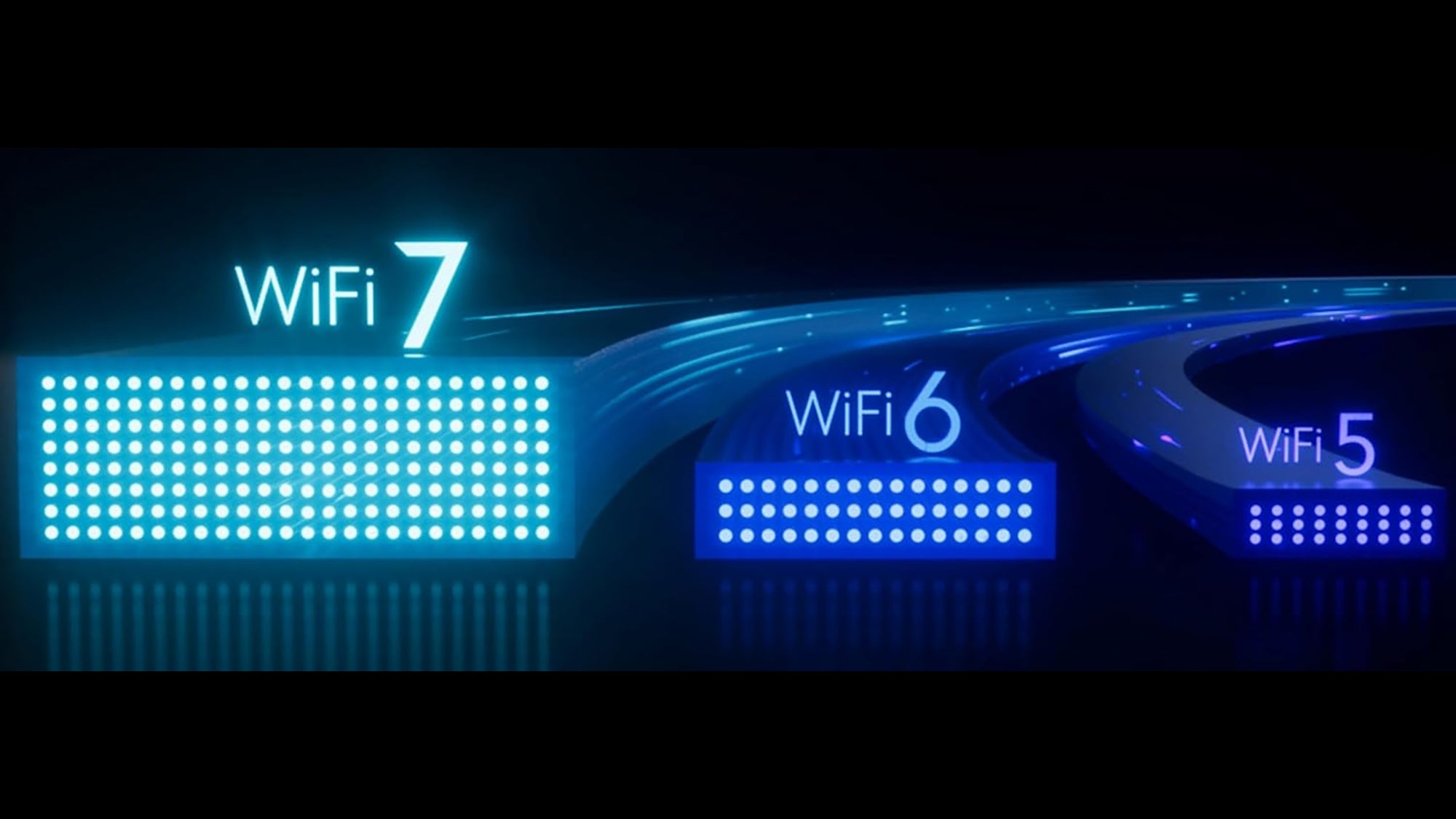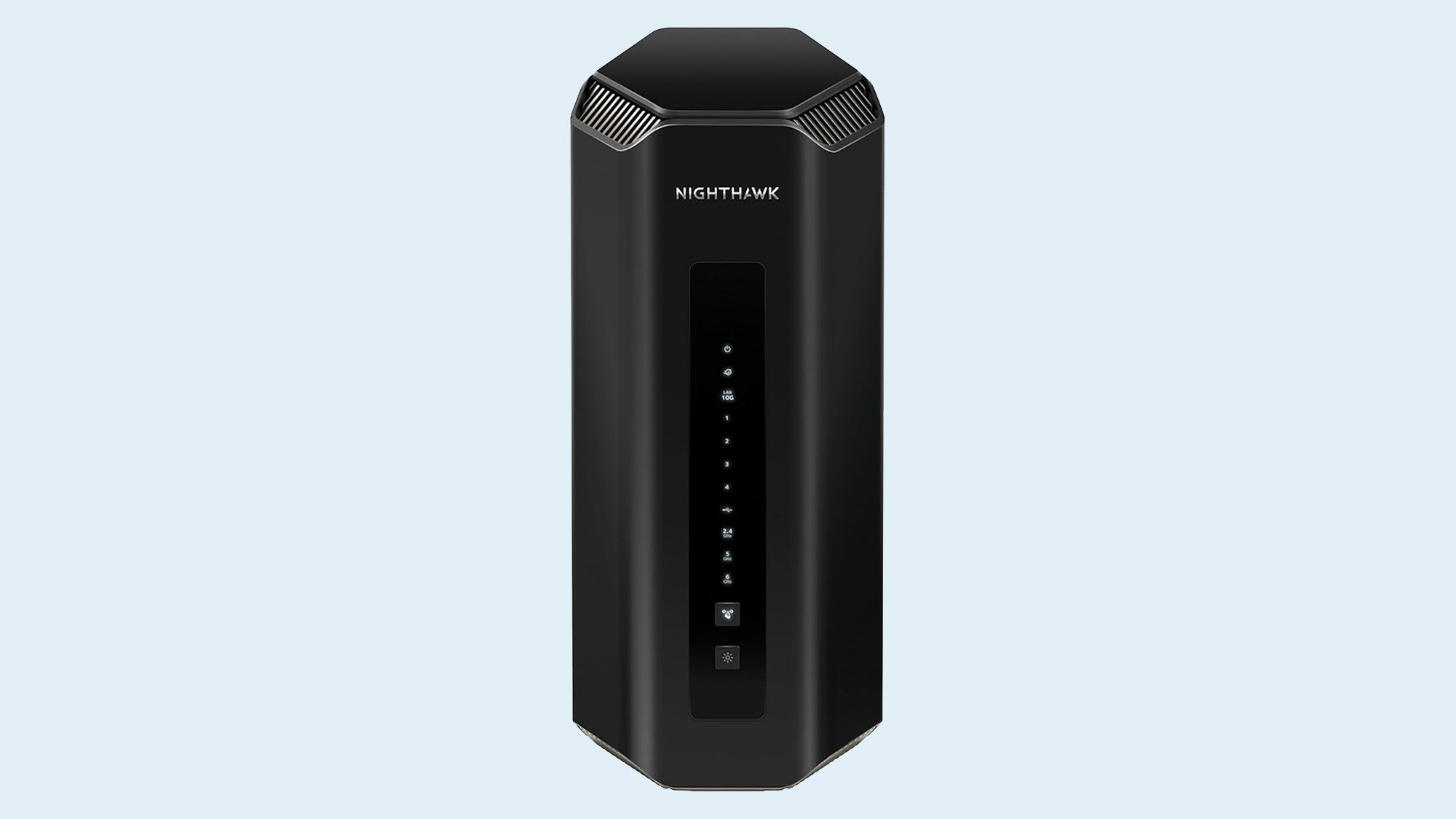After Wi-Fi 6 and Wi-Fi 6E, next in line is Wi-Fi 7: The new wireless internet standard, also known as IEEE 802.11be, has now been officially certified and launched, which means it’s about to start showing up in consumer gadgets.
Wi-Fi standards are the responsibility of the Wi-Fi Alliance, an industry body that works in partnership with hundreds of technology companies—including Apple, Samsung, Intel, and Sony—to drive forward and regulate Wi-Fi development.
Now that certification has been approved, you can start thinking about taking advantage of Wi-Fi 7 and upgrading to hardware that supports it. It brings with it a number of key improvements, which should mean faster, more reliable Wi-Fi at home.
The Wi-Fi 7 difference
Like earlier Wi-Fi upgrades, Wi-Fi 7 brings with it more bandwidth. The analogy usually deployed here is cars traveling along a highway: More bandwidth means more lanes in which the cars can travel. Even if the data packets (the cars) aren’t actually traveling faster, there’s more room for them to move at once, which should mean less interference and congestion, and faster speeds around your Wi-Fi network as a result.
With the latest Wi-Fi routers, you have three frequency bands: 2.4GHz, 5GHz, and 6GHz, which are a little bit like different types of road (to keep the transport analogy). Data moves more slowly on the 2.4GHz band, but can travel further distances; whereas on the 5GHz and 6GHz bands, data moves faster over a reduced range.
Wi-Fi 7 doesn’t affect these bands, but it does affect the channels they’re made up of. Wi-Fi 7 doubles the bandwidth of the channels, up to 320MHz, but only on the 6GHz band (there isn’t the ‘room’ for more lanes to be built on the 2.4GHz and 5GHz bands).
From a practical standpoint, this benefits environments with many devices vying for bandwidth. So if you have tons of smart devices, streaming boxes, and other data-hungry gadgets vying for bandwidth, they will appreciate the extra room (once they’re compatible, of course).

Wi-Fi 7 comes with some other tricks too. Quadrature Amplitude Modulation (or QAM) is upgraded from 1K to 4K: In simple terms, that just refers to the efficiency with which data can be packed into the cars traveling along the Wi-Fi roads. The Wi-Fi 7 standard also brings with it some improvements in how data can be routed across two bands at the same time.
Another improvement comes with what’s known as Orthogonal Frequency Division Multiple Access (or OFDMA), if you can cope with yet another bit of jargon. All you need to know from a consumer level is that OFDMA in Wi-Fi 7 is better able to chat to multiple devices at once, which should improve performance in places with a lot of gadgets wanting to get online at the same time.
Don’t worry if that all sounds very technical: Routers are built to handle everything automatically behind the scenes for you. The end result should be better Wi-Fi signals for your devices—signals that are faster and more reliable—and the capacity for more devices to be connected at once, thanks to those extra highway lanes. All these tricks mean cars can get from A to B more easily, and with more data on board.
How to use Wi-Fi 7
The arrival of a new Wi-Fi standard doesn’t mean that your existing gadgets or home internet is about to become obsolete—everything will carry on working as normal. However, you will start to see Wi-Fi 7 mentioned on phones, laptops, and other devices, showing that they’re capable of supporting the new standard.
In order to take advantage of Wi-Fi 7, you need to have a Wi-Fi 7 router installed, and be using gadgets that support Wi-Fi 7 too. Anything that is compatible with Wi-Fi 7 will also work with older Wi-Fi protocols too (just not at the same level of performance), so you don’t have to worry about changing everything in your home at the same time.
As with any Wi-Fi upgrade like this, bear in mind that Wi-Fi 7 won’t actually improve the speed of the broadband coming into your property—that’s something you’ll need to talk to your internet service provider about.

What Wi-Fi 7 will do is make sure that the internet speeds that you’ve signed up for are available to more gadgets at a greater distance, so you may well see certain pieces of hardware and certain rooms in your home getting faster internet speeds than they were before.
According to Netgear, you might get 4.8x faster speeds across all of your devices, once they’re all upgraded, though to some extent, performance depends on the Wi-Fi 7 router that you have installed. Even kit with a Wi-Fi 7 badge on the box won’t necessarily take full advantage of all the improvements that Wi-Fi 7 brings with it, so be sure to double-check spec listings if you’re planning on making the switch to the new standard.
It’s going to take a while for Wi-Fi 7 routers and other compatible gadgets to appear on the scene, but if you’re buying a new device from this point on you can start looking for Wi-Fi 7 support. Some routers, such as the Netgear Nighthawk RS700S, have already started appearing on the scene—though as we’ve mentioned, they will vary in terms of the Wi-Fi range they offer and the maximum number of devices they can connect to.





